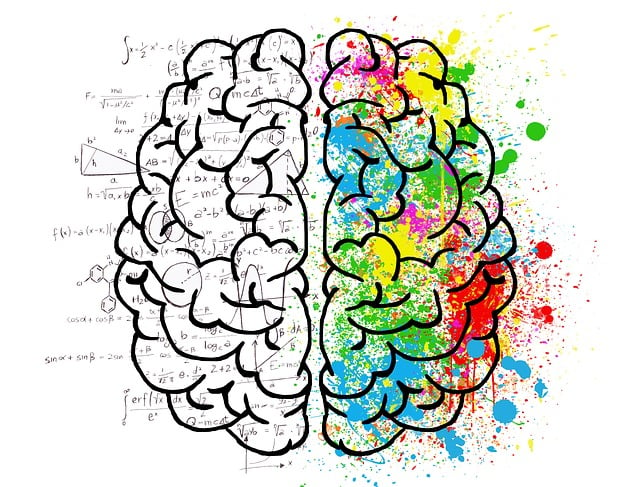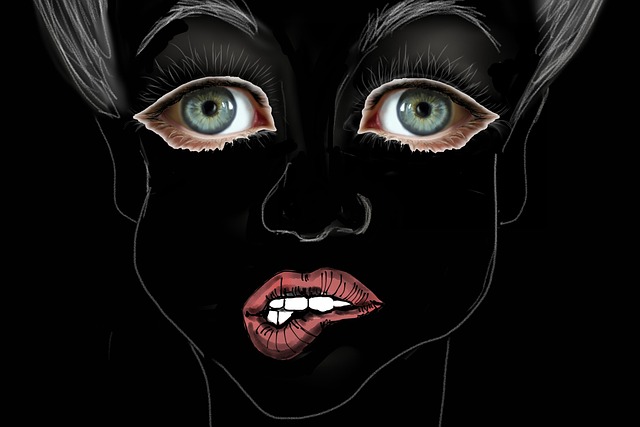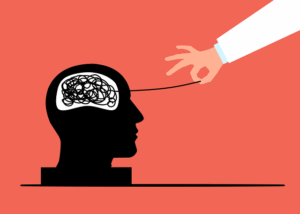Cognitive-Behavioral Therapy (CBT) is a powerful anxiety treatment method targeting negative thought patterns and behaviors. By collaborating with a therapist, individuals learn to challenge distorted thinking, reduce anxiety symptoms, and develop healthier coping mechanisms. CBT equips them with tools like relaxation techniques, exposure therapy, and thought recording to manage anxiety effectively. This structured approach offers long-lasting solutions by replacing negative thought cycles with positive, realistic ones, making it an effective treatment for various anxiety disorders.
Anxiety can significantly impact daily life, but help is available through Cognitive-Behavioral Therapy (CBT), a highly effective approach to managing anxiety disorders. This article delves into the power of CBT, explaining its mechanisms in alleviating anxiety. We explore techniques like identifying and challenging negative thoughts, behavioral modifications, and relaxation strategies. Learn about common anxiety conditions CBT treats and discover tips for integrating these practices into daily routines for long-term mental well-being. Additionally, we guide you in finding qualified therapists specializing in CBT for optimal anxiety treatment.
Understanding Cognitive-Behavioral Therapy (CBT) for Anxiety

Cognitive-Behavioral Therapy (CBT) is a highly effective form of anxiety treatment that focuses on identifying and changing negative thought patterns and behaviors contributing to anxiety. It works by helping individuals challenge and reframe distorted thinking, thereby reducing anxiety symptoms and fostering healthier coping mechanisms. CBT for anxiety involves collaborative work between the therapist and client, where they together explore unhelpful beliefs and develop more adaptive strategies to manage anxious thoughts and feelings.
This therapeutic approach aims to empower individuals to take control of their lives by understanding how their thoughts, emotions, and behaviors are interconnected. Through structured sessions, CBT equips people with practical tools to navigate and reduce anxiety in various aspects of their daily lives. By challenging negative thought cycles and replacing them with more realistic and positive ones, CBT offers a long-lasting solution for managing anxiety effectively.
How CBT Works to Manage Anxiety Disorders

Cognitive-behavioral therapy (CBT) is a highly effective anxiety treatment that focuses on identifying and changing negative thought patterns and behaviors contributing to anxiety disorders. It works by helping individuals understand the connection between their thoughts, feelings, and actions, and teaching them to challenge and replace unhelpful cognitive distortions with more realistic and positive ones.
Through CBT, individuals learn coping strategies to manage anxious symptoms, such as relaxation techniques, problem-solving skills, and exposure therapy. This structured approach enables them to face feared situations gradually, reducing anxiety over time. By rewire their thought processes, CBT empowers people to respond to stressful situations differently, leading to improved emotional well-being and a greater sense of control over their lives.
Identifying and Challenging Negative Thought Patterns

Negative thought patterns play a significant role in fueling and perpetuating anxiety disorders. Cognitive-behavioral therapy (CBT) recognizes this and focuses on identifying and challenging these unhelpful thoughts as a key component of anxiety treatment. By bringing awareness to automatic negative thoughts, individuals can learn to recognize cognitive distortions such as catastrophizing, all-or-nothing thinking, and overgeneralization.
Through CBT techniques like thought recording and logical analysis, people gain insights into the irrationality of their fears and worries. They learn to question and reframe these negative patterns, replacing them with more realistic and balanced thoughts. This process empowers individuals to manage anxiety symptoms effectively, fostering a healthier and more adaptive mindset that is better equipped to handle challenging situations.
Behavioral Techniques for Overcoming Anxiety-Related Behaviors

Behavioral techniques play a pivotal role in cognitive-behavioral therapy (CBT) for anxiety treatment, offering practical strategies to manage and overcome anxiety-related behaviors. One effective method is gradual exposure, where individuals confront situations or objects they fear in a controlled manner, starting from less intimidating scenarios and gradually advancing to more challenging ones. This technique helps retrain the brain by reducing the intensity of anxiety responses over time.
Another powerful tool is response prevention, which involves resisting the urge to engage in avoidance behaviors that temporarily alleviate anxiety. By preventing these responses, individuals learn to tolerate discomfort and anxiety without resorting to escapist strategies. This process allows them to challenge their fears and gain a sense of control, ultimately reducing the impact of anxiety on their lives.
Relaxation Strategies Within CBT Framework

Cognitive-behavioral therapy (CBT) incorporates various relaxation strategies as a powerful tool in anxiety treatment. These techniques aim to help individuals manage and reduce their anxious responses by promoting calmness and mental clarity. One common method is deep breathing exercises, which involve slow, controlled inhalation and exhalation, allowing the body to relax and the mind to quieten. Such practices have been shown to regulate emotional reactions and decrease symptoms of anxiety disorders.
Additionally, progressive muscle relaxation is another CBT-integrated strategy. It entails systematically tensing and then releasing different muscle groups, helping individuals become more aware of bodily sensations related to stress or anxiety. By learning to recognize and manage these physical cues, people can intervene early in the anxiety response cycle, fostering better control over their emotional well-being.
Common Anxiety Disorders Treated with CBT

Cognitive-behavioral therapy (CBT) is a highly effective approach for treating various anxiety disorders. Among the common conditions CBT addresses are generalized anxiety disorder (GAD), where individuals experience excessive and persistent worry about everyday matters, and panic disorder, characterized by recurrent and unexpected panic attacks. Social anxiety disorder, marked by an intense fear of social or performance situations, is also successfully treated with CBT. Additionally, this therapy proves beneficial for specific phobias, such as arachnophobia (fear of spiders) or acrophobia (fear of heights), helping individuals confront and overcome their fears in a structured manner.
CBT equips patients with coping strategies to manage anxiety symptoms and change unhelpful thought patterns. By challenging negative thoughts and behaviors, CBT enables individuals to lead more fulfilling lives free from the constraints of anxiety.
Integrating CBT into Daily Life and Long-term Success

Integrating cognitive-behavioral therapy (CBT) into daily life is a pivotal step for sustained success in anxiety treatment. CBT empowers individuals to recognize and challenge negative thought patterns, replacing them with healthier alternatives. This process involves practical techniques like journaling, mindfulness exercises, and exposure therapy, which can be seamlessly incorporated into routine activities. For instance, mindful breathing during morning coffee or reflecting on the day’s positive aspects before sleep. By making these practices habitual, individuals reinforce new coping mechanisms, enabling them to manage anxiety symptoms effectively over time.
Long-term success in anxiety treatment relies on continued engagement with CBT principles even after formal therapy concludes. Regular self-reflection, for example, allows individuals to identify and address emerging patterns of unhelpful thinking. Moreover, maintaining a supportive network and practicing self-care are integral components of long-term management. By combining these strategies with the knowledge and skills gained during CBT, individuals can achieve lasting improvements in their mental well-being and quality of life, effectively managing anxiety symptoms as they arise.
Finding a Qualified CBT Therapist for Anxiety Relief

Anxiety can be a complex and debilitating condition, making finding the right support crucial for effective anxiety treatment. One of the most recommended approaches is Cognitive Behavioral Therapy (CBT), which has proven successful in helping individuals manage and overcome anxiety disorders. The next step is to locate a qualified CBT therapist who specializes in anxiety relief. This search is paramount as it significantly impacts the outcome of your therapy journey.
When looking for a CBT therapist, consider professionals with extensive training and experience in treating anxiety-related issues. Many therapists offer online sessions, making access more convenient. Ensure they possess certifications from recognized institutions, as this guarantees a certain level of expertise. Reviews and testimonials from previous clients can also guide you in making an informed decision, providing insights into the therapist’s approach and success rate in anxiety treatment.
